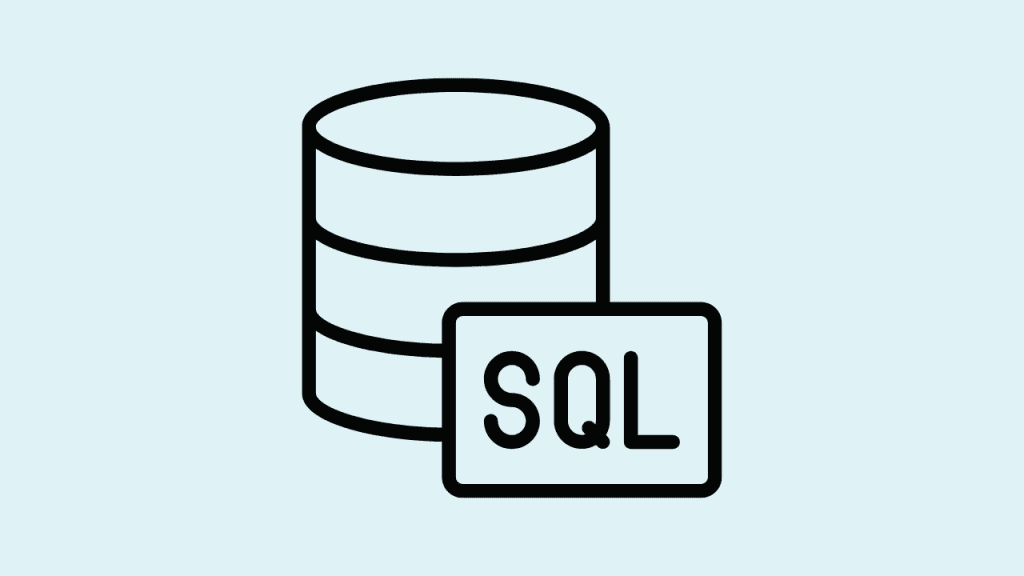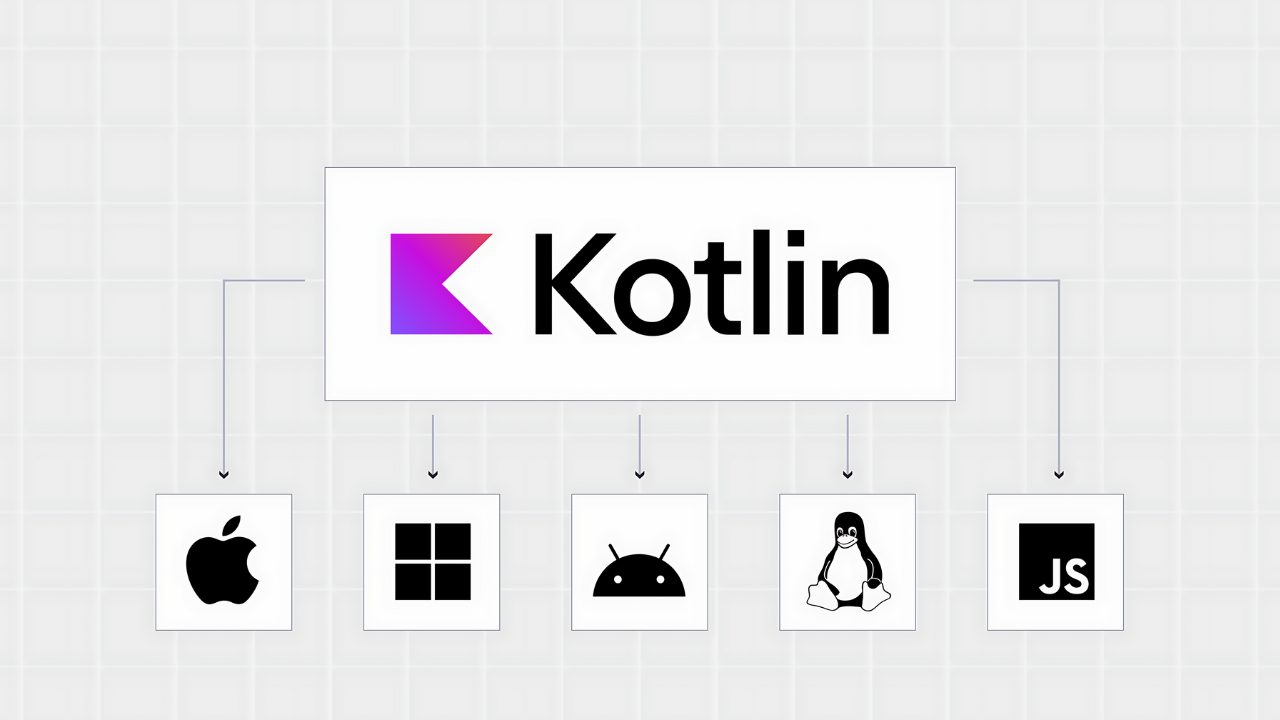Well, look who decided to show up to class! You finally realized that knowing SQL is the key to unlocking all the juicy insights hiding in that data, didn’t you? Don’t worry, we’ll get you sorted out right quick.
Grab a cup of joe, put your feet up, and let Professor Datawhisperer teach you a thing or two about SQL for data analysis. We’ll start with the basics – what SQL even is – then talk about how it lets you play around with data to pull out the good stuff.
Before you know it, you’ll go from SQL newbie to analysis hotshot. So stick with us, and we’ll have you crunching numbers like a pro in no time at all. The future is data, baby, and SQL is your ticket to ride!
What Is SQL and Why Learn It for Data Analytics?

Read More : Learn MongoDB From Scratch: Level Up Your Skills Before 2025
Speak the data’s language
SQL (Structured Query Language) is the lingua franca of data. It’s the language that databases understand – the special code that lets you talk to those humongous data warehouses. Without SQL, all that precious information would be locked away, useless. You’d be like someone furiously shouting at a brick wall.
The key to unlocking insights
Data analysis is all about extracting insights from raw data to guide smart decisions. But first, you need a way to access and manipulate that data.
That’s where SQL comes in. It’s your all-access pass to query, update, combine, and transform data however you need. Think of it as a powerful data janitor that can clean things up before you start crunching numbers.
Efficiency is the name of the game
Why bother learning SQL for data analysis? Two words: speed and efficiency. SQL lets you quickly retrieve just the exact data you need from massive databases. No more wading through mountains of irrelevant information. With SQL you can focus on the important stuff and skip the fluff.
The universal tongue of data
SQL is also a standard language used by almost every relational database. Once you learn the grammar and vocabulary, you’ll be able to communicate with databases anywhere. It’s the closest thing we have to a universal data translator.
Set yourself up for success
Learning SQL is the first crucial step for anyone looking to pursue a career in data, whether that’s as an analyst, scientist, or engineer. It lays the essential groundwork. Why stumble around in the dark when you can flip on the lights with SQL? Invest some time now to illuminate your data path.
Key SQL Commands and Clauses for Data Analysis

The Sacred Trio
If you’re venturing into the mystical realm of SQL for data analysis, you’ll want to get cozy with the holy trinity of commands: SELECT, FROM, and WHERE. These three amigos are the cornerstone of querying data.
Think of SELECT as the all-seeing eye that plucks out the exact data columns you desire. “Give me the names and emails,” you command, and SELECT obeys.
FROM tells SQL which table (or joined tables) to pull that info from. And if you want to apply some filters? That’s where the trusty WHERE clause comes in, letting you set conditions like “only show me users over 30.”
Gotta GROUP ‘Em All
But wait, there’s more! The GROUP BY clause is a real game-changer for data analysis. It lets you aggregate and summarize data based on common values in a column. Like if you wanted to know the total sales for each product category. Just GROUP that data BY the category column and let SQL work its magic.
Filters on Filters on Filters
Ah yes, the HAVING clause. It’s like WHERE’s cool older sibling that lets you filter on aggregated group data. For example, you could use HAVING to only include product categories with total sales over $10,000. Talk about precision targeting!
Join the Club
In the data world, your tables are like a bunch of friends who each know different things about your customers, products, orders, etc. The JOIN commands (INNER, LEFT, RIGHT, etc.) allow you to mash up and combine intel from multiple tables. It’s the SQL equivalent of getting the whole squad together for a data party.
Putting It All Together
The real power comes when you start mixing and matching these clauses. A query might SELECT specific columns, JOIN a few tables, filter some rows with WHERE, GROUP the remaining data, and then apply some HAVING filters on the groups. It’s like an intricate dance…with data as your partner.
Just remember to test your queries thoroughly. Few things are more humbling than realizing your code returned the wrong data and you’ve been making major decisions based on a lie. But hey, we’ve all been there!
Using SQL for Data Exploration and Manipulation

The Double-Edged Sword
SQL is a razor-sharp tool that can slice and dice data like a hot knife through butter. But with great power comes great responsibility, my friend. Wield SQL carelessly, and you might as well be juggling chainsaws while blindfolded.
On the flip side, mastering SQL is like having a superpowered data sidekick at your beck and call. Need to extract insights from a mountain of raw data? SQL’s got your back. Want to manipulate and transform data into something more palatable? SQL’s your go-to wizard.
Superpowers Unleashed
Let’s break down some of SQL’s most mind-bending abilities that’ll make you feel like a data-bending superhero:
- Data Spelunking: SQL lets you rappel deep into the caves of your databases, exploring every nook and cranny with laser precision. You can sift through tables, columns, and rows with surgical accuracy, uncovering hidden gems of information that would otherwise remain buried.
- Transformation Station: Like a shape-shifting master, SQL can contort and reshape your data into any form you desire. Merging tables? Check. Splitting columns? No sweat. Performing complex calculations? Child’s play for SQL’s transfiguration talents.
- Query Wizardry: Crafting SQL queries is like casting spells with the right incantations. With a few well-chosen keywords and clauses, you can summon forth the exact data you seek, filtered, sorted, and grouped to perfection. It’s like having a genie in a bottle, but way cooler (and less creepy).
Read More : JavaScript vs. Python 2024: Which Should You Learn and Why?
Embrace the Power
Of course, with great power comes… well, you know the drill. SQL’s might be misused, leading to data disasters of epic proportions. But fear not! By learning SQL the right way and practicing responsible data manipulation, you’ll be a force for good in the data universe.
So, what are you waiting for? Dive headfirst into the world of SQL, and unlock the secrets of data exploration and manipulation. Just remember: with SQL at your fingertips, you’re not just a data analyst – you’re a data superhero!
Advanced SQL Techniques for Data Science

A Whole New World
Listen up, data nerds! You’ve mastered the basics of SQL, joined a few tables, and even dabbled in some subqueries. But let me let you in on a little secret – that’s just the tip of the iceberg. The real magic happens when you dive into the world of advanced SQL techniques.
Buckle up, because we’re about to embark on a wild ride through the depths of data science, where window functions, recursive queries, and pivoting will become your new best friends.
Window to the Soul (of Your Data)
Window functions are like having a crystal ball that lets you peek into the future (and past) of your data. With these bad boys, you can calculate running totals, rank values, and even compare rows without resorting to self-joins (which, let’s be honest, can get pretty messy).
Ever wanted to know the highest salary in each department? Or maybe you need to calculate a moving average for stock prices? Window functions have got your back. Just wait until you discover the magic of PARTITION BY and ORDER BY clauses – they’ll blow your mind!
Recursive Revelations
Ah, recursion – the ultimate mind-bender. But in SQL, it’s not just a philosophical exercise; it’s a powerful tool that lets you traverse hierarchical data like a boss. Think employee-manager relationships, nested categories, or even your family tree (we won’t judge if it’s a bit tangled).
With recursive queries, you can navigate these intricate structures with ease, retrieving data at any level of the hierarchy. And the best part? You don’t have to rely on procedural programming languages anymore. SQL has your back, fam.
Pivot to Perfection
Let’s be real – sometimes, your data looks like a hot mess. But fear not, my friends, for the PIVOT and UNPIVOT operators are here to save the day. With a few simple keystrokes, you can transform that tangled web of rows and columns into a sleek, organized table that even Marie Kondo would be proud of.
Need to convert data from rows to columns (or vice versa)? No problem! PIVOT and UNPIVOT have got you covered. And once you’ve mastered these techniques, you’ll be able to slice and dice your data like a true pro.
The Final Frontier
So, there you have it – a sneak peek into the world of advanced SQL techniques for data science. But this is just the beginning. There’s a whole universe of possibilities waiting to be explored, from analytic functions to common table expressions (CTEs) to lateral joins (yes, they’re a thing).
Embrace the power of SQL, my friends, and let it guide you through the vast expanse of data. Who knows? You might just discover the next big breakthrough in your field. Or, at the very least, you’ll be able to impress your colleagues with your mad SQL skills.
Free Resources to Learn SQL Basics for Data Science
Where to Start for Zilch
Let’s be real – learning SQL from scratch can feel like an uphill slog. But don’t sweat it! There are plenty of free resources out there to get your feet wet without denting your wallet. Buckle up, because we’re about to explore some prime picks that’ll have you querying like a pro in no time.
Don’t Ditch the Docs
Okay, we get it – documentation can be about as thrilling as watching grass grow. But hear us out! The official SQL documentation is a goldmine of knowledge, and it’s totally free. Sure, it might not be the most riveting read, but trust us – mastering those docs will make you a SQL sensei.
Online Courses: The Buffet of Learning
Why settle for a snack when you can have the whole buffet? Online course platforms like Coursera, edX, and Udemy offer a smorgasbord of SQL courses, many of which are free or at least have free trial options. From beginner basics to advanced analytics, these courses dish up the skills you need to become a data dynamo.
Git Savvy with Open-Source Goodness
Embrace your inner nerd and dive into the wonderful world of open-source SQL resources on GitHub. You’ll find a treasure trove of tutorials, examples, and even complete courses – all for the low, low price of absolutely nothing. It’s like having a personal SQL coach, minus the expensive gym membership.
YouTube: Your Free, On-Demand Tutor
Who needs a fancy classroom when you’ve got YouTube? This video-streaming behemoth is a goldmine for SQL tutorials, ranging from quick tips to comprehensive course playlists. Just be warned: once you tumble down the SQL rabbit hole on YouTube, you might never want to come out.
Don’t Forget the Blogs!
Last but not least, let’s give a shoutout to the unsung heroes of the SQL learning community: blogs. Tech blogs are a treasure trove of SQL insights, tricks, and real-world examples, often written by seasoned data professionals who know their stuff. Plus, they’re usually free, making them a budget-friendly way to level up your SQL game.
With so many free resources at your fingertips, there’s no excuse not to dive into the wonderful world of SQL. So, what are you waiting for? Grab a snack, fire up your favorite learning platform, and get ready to become a data-wielding wizard!
SQL for Data Analytics Certification and Courses

Relax, SQL Isn’t That Scary
You’ve probably been putting off learning SQL for way too long. Sure, the name sounds intimidating – like some ancient arcane language only understood by overly caffeinated coders. But trust me, SQL is actually one of the more accessible programming languages out there.
Think of SQL as a friendly, persistent butler who diligently fetches data for you from the vast databases of the digital world. Instead of barking cryptic code, you simply ask it politely to “SELECT this” or “JOIN that” and voila! Your precious data is served up on a silver platter.
Read More : Programming Languages for Data Analysis and Visualization in 2024
But Why Do I Need SQL for Data Analytics?
Good question. As a data analyst, your core job is to transform huge, messy data dumps into actionable insights that businesses can use. SQL acts as your indispensable data-wrangling tool for this task.
With SQL, you can quickly extract, filter, sort, and combine data from multiple database tables. It’s like having a magical all-in-one implement for data gardening. Proper use of SQL can save you countless hours of monotonous spreadsheet work.
Where Can I Learn These SQL Sorcery Ways?
While many free, scattered SQL resources exist online, your best bet is a comprehensive, structured course. This brings us to the “SQL from A to Z” learning track.
This mega-course covers all the fundamentals, from basic querying syntax to advanced concepts like window functions and recursive queries. You’ll emerge from its depths as a full-fledged SQL wizard, ready to bend data to your will.
But here’s the real kicker – the course is laser-focused on using SQL specifically for data analysis applications. So you’ll be learning directly transferable, real-world skills. No fluff or theory, just pure pragmatic data wizardry.
A Sly Parting Tip
As you’ll soon discover, the true power of SQL lies in combining its deceptively simple commands. Mastering techniques like JOINs, subqueries, and common table expressions will have you slinging SQL like a pro. These are the skills that’ll make you stand out.
So go on, take the leap into the vast ocean of data. With SQL by your side as a trusty life preserver, you’ll be swimming in insights before you know it. The waters are fine, I promise!
Learning SQL in One Hour a Day

The Grand Illusion
Ah yes, the tantalizing promise of “learning SQL in one hour a day.” It conjures up visions of effortlessly mastering this arcane language while sipping your morning coffee or decompressing after work. The reality, however, is a bit more…nuanced.
A Worthy Pursuit
Don’t get me wrong – SQL is an incredibly valuable tool in the realm of data analytics and data science. It’s the linguistic glue that binds disparate data sources together, allowing you to extract insights from the digital ether. But let’s be real here, cramming a complex programming language into bite-sized daily chunks is about as realistic as learning French by watching Pepe Le Pew cartoons.
Slow and Steady Wins the Race
The truth is, that learning SQL (or any programming language for that matter) requires a consistent, dedicated effort. It’s not about the number of hours you put in per day, but rather the quality of that time and your ability to build upon previous knowledge.
Think of it like learning to play the guitar. You can’t expect to shred like Jimi Hendrix after a few one-hour sessions. It takes practice, patience, and a willingness to make mistakes (lots of them) before you can truly master the instrument.
The Path of Least Resistance
That said, breaking your SQL journey into manageable daily chunks can be a helpful approach. Dedicate an hour each day to practicing queries, exploring new functions, and building mini-projects to reinforce your understanding. Consistency is key, even if it means sacrificing that Netflix binge session or happy hour with coworkers.
The Payoff
And trust me, the payoff is worth it. With SQL under your belt, you’ll be able to navigate the vast oceans of data with ease, uncovering insights that would make a business analyst weak in the knees. So, embrace the journey, celebrate the small victories, and don’t be discouraged by the occasional syntax error (we’ve all been there).
Remember, learning SQL in one hour a day is less of a hard and fast rule and more of a gentle reminder to make consistent progress. Stay curious, stay committed, and before you know it, you’ll be a SQL ninja, slicing and dicing data like a true master.
Integrating SQL With Python, R, and Other Tools

The Dynamic Duo
You know SQL is the rock star for querying databases. But what happens when you want to take your data-wrangling game to the next level? Enter Python and R – the dynamic duo that takes SQL’s raw power and amplifies it tenfold.
Imagine being able to script complex queries, automate data pipelines, and unleash advanced analytics – all by harmoniously blending SQL with Python or R. It’s like having a team of data ninjas at your beck and call.
Pythonic SQL Sorcery
Python, with its extensive collection of data libraries like Pandas, NumPy, and SQLAlchemy, can seamlessly integrate with SQL databases. You can execute queries, fetch results into Python data structures, and manipulate them with mind-bending ease.
But that’s not all – with a little elbow grease, you can even embed SQL statements directly into your Python code. Talk about efficiency! It’s like having a built-in SQL interpreter at your fingertips.
The R-evelation
Not to be outdone, R brings its own brand of statistical sorcery to the table. Packages like dplyr, DBI, and odbc make it a breeze to interact with SQL databases from within R’s cozy environment.
Wrangle data frames, join tables and unleash complex analyses – all while harnessing the power of SQL under the hood. It’s like having a personal data butler who speaks both R and SQL fluently.
Integrating for Greatness
But why stop there? With tools like Apache Spark and its SQL module, you can distribute your SQL queries across clusters and crunch massive datasets with ease. Throw in some machine learning algorithms, and you’ve got a recipe for data domination.
The possibilities are endless when you integrate SQL with Python, R, and other cutting-edge tools. It’s like having a Swiss army knife for data manipulation, capable of tackling any challenge that comes your way.
So, buckle up and get ready to unleash your inner data wizard. The world of SQL integration awaits, and with the right tools in your arsenal, you’ll be slicing and dicing data like a pro in no time.
Conclusion
You’ve reached the end of the data rainbow, my analytical friend. Like a pot of gold, you now possess the keys to query, slice, and dice data like a spreadsheet samurai. Wield your new SQL skills to find insights others overlook.
Let order and logic reign over the chaotic jumble of databases. And remember – with great data power comes great responsibility. Use your new abilities judiciously to uncover the truth, not spread misinformation. The world needs more data detectives. Go forth and deduce, dear Watson!
Read More : Learn C++ Programming From Scratch : Full Roadmap & Example
 Oko Dot All In One Technology Solutions By Likhon Hussain
Oko Dot All In One Technology Solutions By Likhon Hussain
